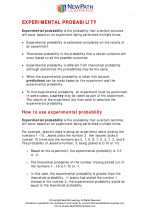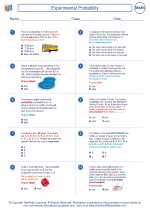Permutations
Permutations are a fundamental concept in combinatorics that deals with the arrangement of objects. In mathematics, a permutation is an ordered arrangement of a set of items. The number of permutations of a set of n items can be calculated using the formula:
n! = n * (n-1) * (n-2) * ... * 3 * 2 * 1
Where "n" is the number of items in the set and "!" represents the factorial of a number. The factorial of a non-negative integer n is the product of all positive integers less than or equal to n.
Permutation Notation
Permutations are often denoted using the notation P(n, r), where n is the total number of items and r is the number of items being arranged. This notation represents the number of ways to arrange r items from a set of n items.
Calculating Permutations
To calculate the number of permutations, you can use the formula:
P(n, r) = n! / (n - r)!
Where "n" is the total number of items and "r" is the number of items being arranged. This formula accounts for the fact that in a permutation, the order of the items matters.
Example
For example, if you have a set of 5 different letters (A, B, C, D, E) and you want to find the number of ways to arrange 3 of these letters, you would use the formula:
P(5, 3) = 5! / (5 - 3)! = 5! / 2! = 5 * 4 * 3 = 60
So, there are 60 different permutations of 3 letters chosen from a set of 5.
Study Guide
When studying permutations, it's important to understand the concept of ordering and how it affects the number of arrangements. Practice calculating permutations using the formula P(n, r) = n! / (n - r)!, and work through different examples to solidify your understanding. Additionally, familiarize yourself with the factorial function and how it applies to permutations.
Consider practicing with sample problems and seeking additional resources such as textbooks or online tutorials to reinforce your knowledge of permutations.
Remember, permutations are a crucial concept in combinatorics and have applications in various fields such as probability, statistics, and computer science.
.◂Math Worksheets and Study Guides Eighth Grade. Experimental Probability

 Worksheet/Answer key
Worksheet/Answer key
 Worksheet/Answer key
Worksheet/Answer key
 Worksheet/Answer key
Worksheet/Answer key
